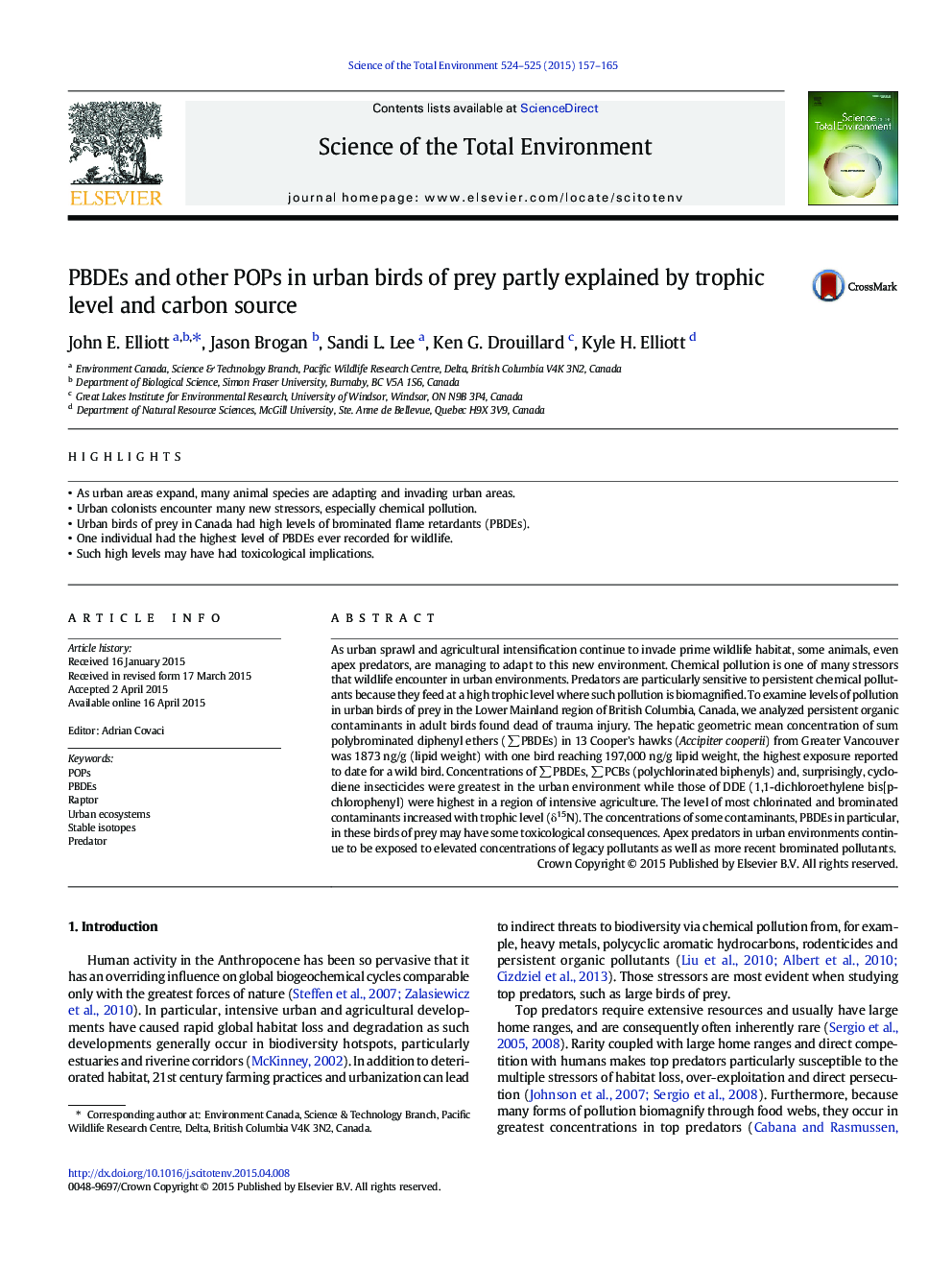| کد مقاله | کد نشریه | سال انتشار | مقاله انگلیسی | نسخه تمام متن |
|---|---|---|---|---|
| 6326713 | 1619757 | 2015 | 9 صفحه PDF | دانلود رایگان |

- As urban areas expand, many animal species are adapting and invading urban areas.
- Urban colonists encounter many new stressors, especially chemical pollution.
- Urban birds of prey in Canada had high levels of brominated flame retardants (PBDEs).
- One individual had the highest level of PBDEs ever recorded for wildlife.
- Such high levels may have had toxicological implications.
As urban sprawl and agricultural intensification continue to invade prime wildlife habitat, some animals, even apex predators, are managing to adapt to this new environment. Chemical pollution is one of many stressors that wildlife encounter in urban environments. Predators are particularly sensitive to persistent chemical pollutants because they feed at a high trophic level where such pollution is biomagnified. To examine levels of pollution in urban birds of prey in the Lower Mainland region of British Columbia, Canada, we analyzed persistent organic contaminants in adult birds found dead of trauma injury. The hepatic geometric mean concentration of sum polybrominated diphenyl ethers (âPBDEs) in 13 Cooper's hawks (Accipiter cooperii) from Greater Vancouver was 1873 ng/g (lipid weight) with one bird reaching 197,000 ng/g lipid weight, the highest exposure reported to date for a wild bird. Concentrations of âPBDEs, âPCBs (polychlorinated biphenyls) and, surprisingly, cyclodiene insecticides were greatest in the urban environment while those of DDE (1,1-dichloroethylene bis[p-chlorophenyl) were highest in a region of intensive agriculture. The level of most chlorinated and brominated contaminants increased with trophic level (δ15N). The concentrations of some contaminants, PBDEs in particular, in these birds of prey may have some toxicological consequences. Apex predators in urban environments continue to be exposed to elevated concentrations of legacy pollutants as well as more recent brominated pollutants.
Journal: Science of The Total Environment - Volumes 524â525, 15 August 2015, Pages 157-165